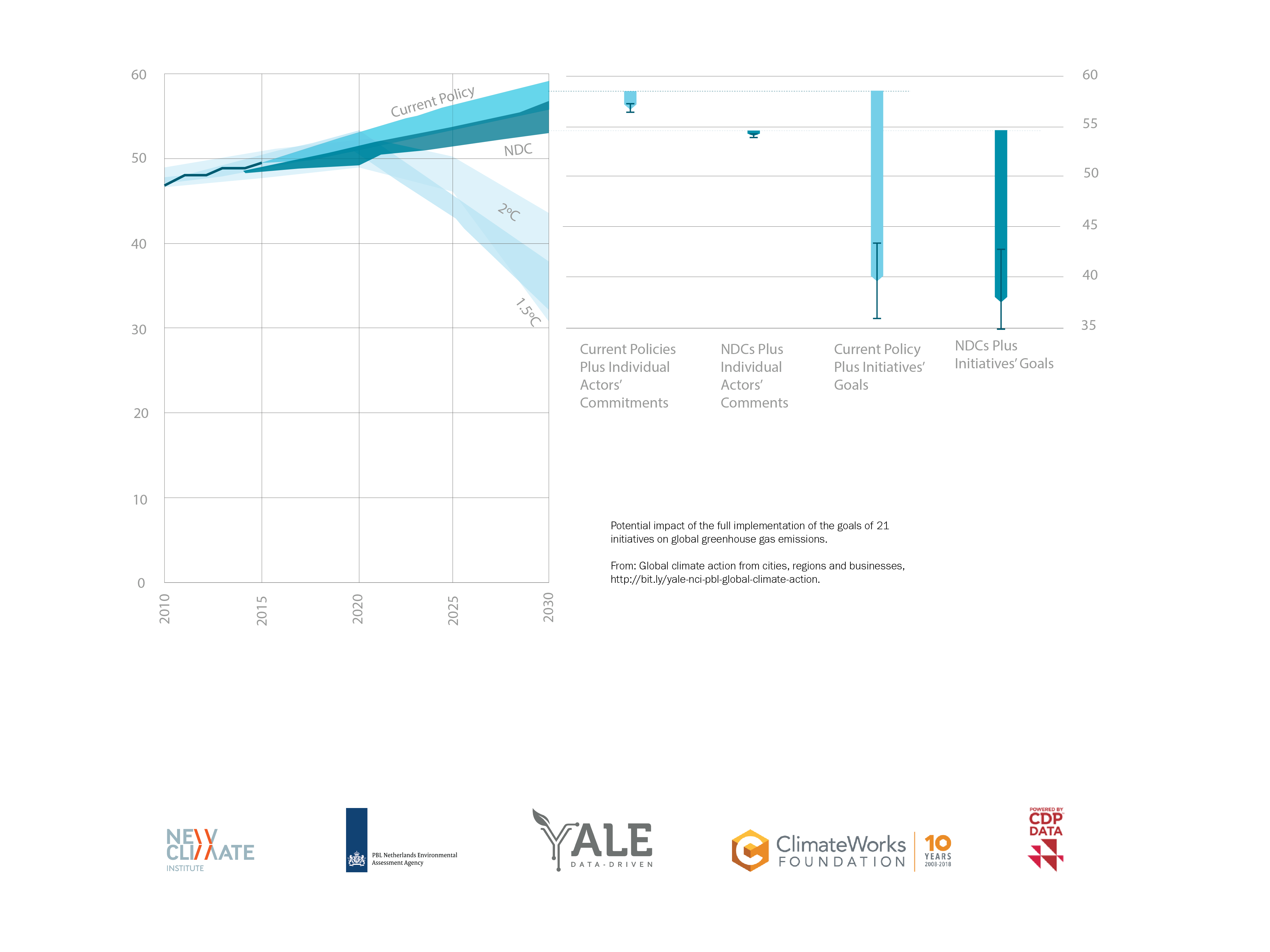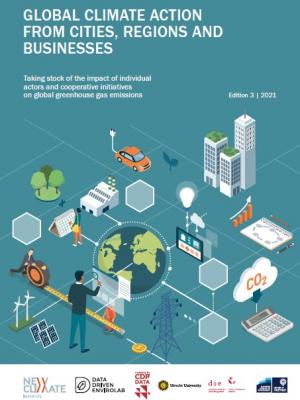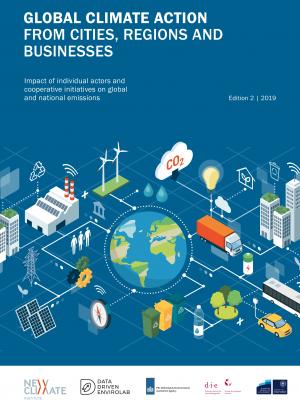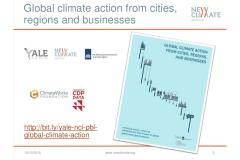Since the Paris Climate Agreement solidified an “all hands on deck” approach to climate change, cities, regions and businesses have become key contributors to mitigation, adaptation and finance efforts. These actors are pledging a range of actions, from directly reducing their own greenhouse gas emissions footprints, to building capacity for climate adaptation and resilience to providing private finance. This report is the most comprehensive assessment of these non-state actor commitments to reduce greenhouse gases to date. The report focuses on 9 high-emitting countries – Brazil, China, India, Indonesia, Japan, Mexico, Russia, South Africa, and the United States – and the European Union. It analyses the efforts of more than 6,000 cities, states, and regions representing 7 percent of the global population and more than 2,000 companies with a combined revenue of over $21 trillion USD. Key results show that action by cities, states, regions and business can go a long way towards meeting the goals of the Paris Climate Agreement, but their actions alone are not enough to hold global temperature increase to well-below 2°C and work towards limiting it to 1.5° C.
Key findings:
- By 2030, global greenhouse gas emissions could be 1.5 to 2.2 GtCO2e/year lower if individual commitments from nearly 6,000 cities, states and regions, and over 2,000 companies are fully implemented, compared to what would be achieved through national policies that are currently underway. This potential reduction amounts to roughly double Canada’s greenhouse gas emissions in 2016.
- In the United States, where President Trump has announced his intent to withdraw from the Paris Agreement, the full implementation of the reported and quantified individual city, region, and company commitments could provide at least half (between 670 and 810 MtCO2e/year in 2030) of the emissions reductions needed to meet America’s Paris pledge.
- In the European Union, city, region and company commitments could reduce greenhouse gas emissions by 230 to 445 MtCO2e/year, roughly equivalent to Italy’s greenhouse gas emissions in 2016. In China, these actions could reduce emissions by up to 155 MtCO2e, roughly equivalent to what the country’s industrial processes generated in 2014.
- Global greenhouse gas emissions in 2030 would be approximately one-third (15-23 GtCO2e/year) lower than what will be achieved through national policies alone if international cooperative initiatives like the Under2 Coalition and Global Covenant of Mayors grow their membership, meet their goals and are in addition to existing action. The United States, for example, could meet and even exceed its original Paris Agreement pledge if all international cooperative initiatives reach their goals.







